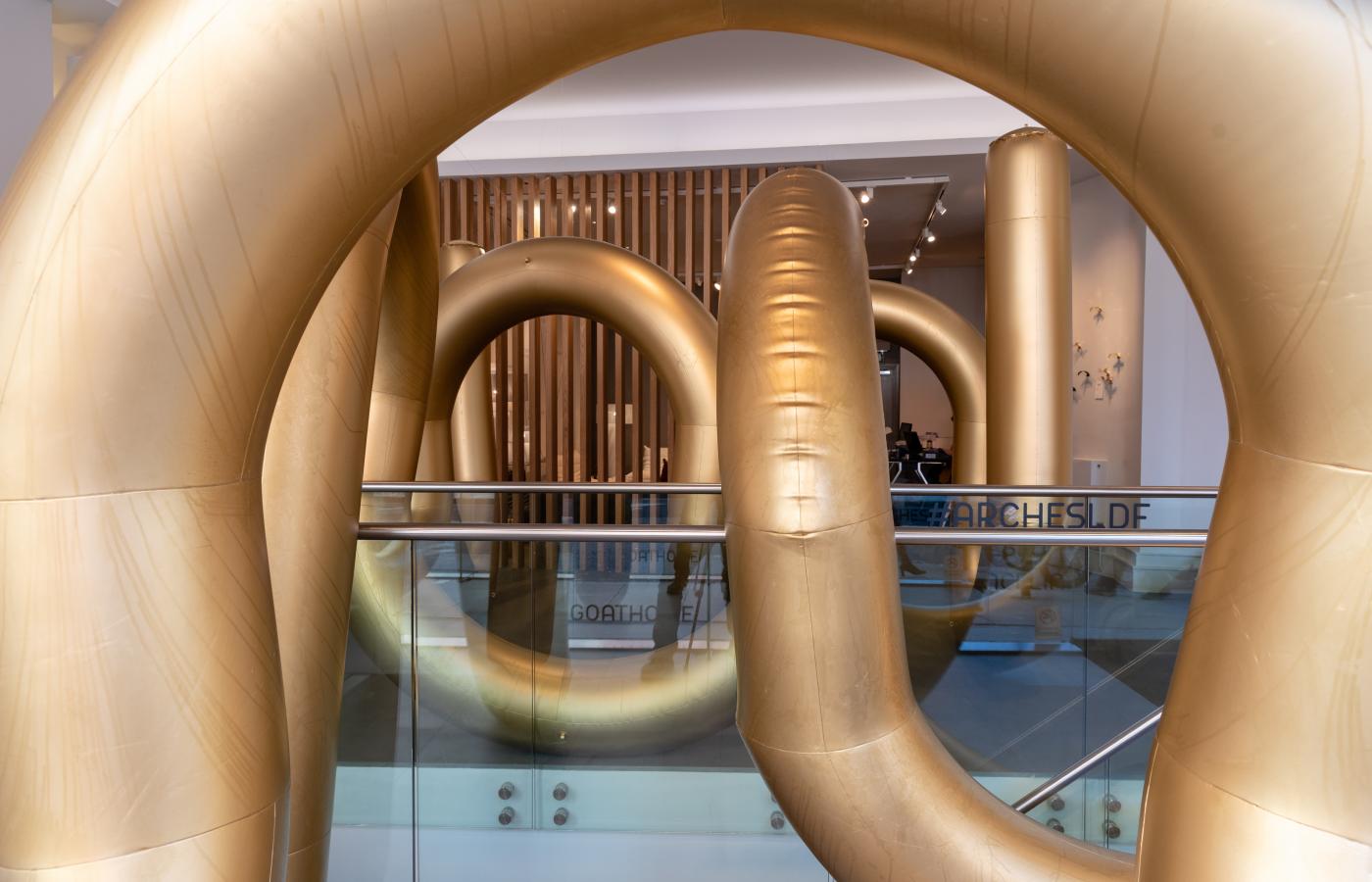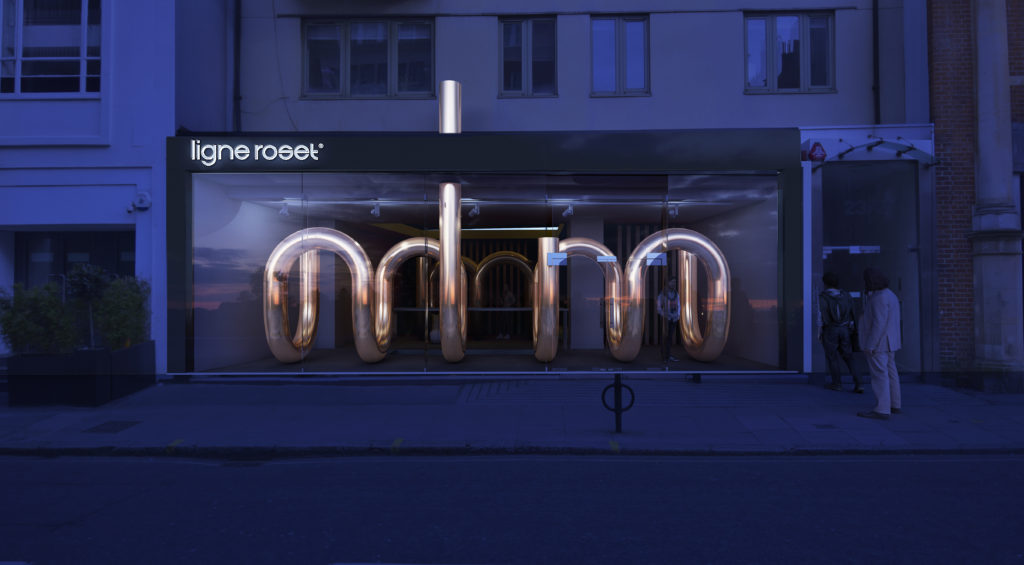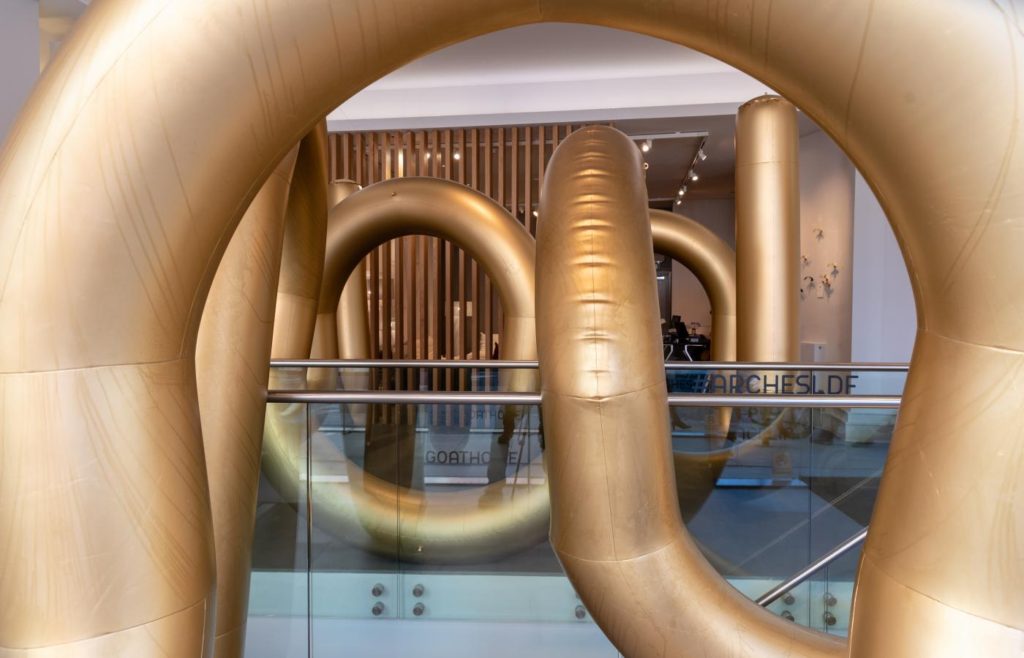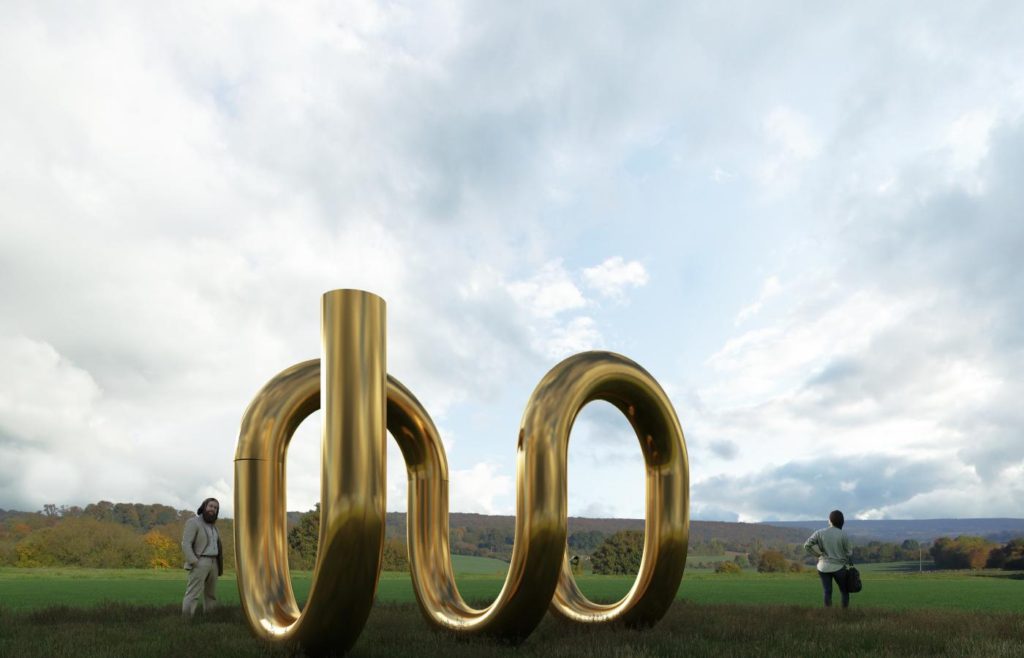Showcasing Fitzrovia’s rich history of design innovation, the district’s creative industry has come together to host a range of events, installations, open studios, workshops, guided walks and tours that highlight the area’s vast and diverse heritage from a line-up of nationally and internationally established design brands.
Recognised as a creative hub with a natural stimulus that nurtures and attracts the finest in British and international design, the area hosts some of the world’s longstanding design houses and the most innovative start-ups and independents.
The Art Collector spoke with artist Cyril Lancelin about his collaboration with Ligne Roset.
Can you tell us about your involvement in design week? What was the inspiration behind Arches?
I had been noticing that increasingly the LDF events that caught the eye or imagination were the visually stimulating, the photograph-able, the ‘taggable’, so I decided to go fully that way this year. I spotted Town.and.concrete’‘s images on Instagram, approached them and eventually we created the impactful ARCHES that are now installed as part of Fitzrovia’s debut at LDF.
Your art often references architectural structures. How can architecture change or influence the way we view art, and vice versa?
Arches is based on a simple line giving life to a labyrinth. The repetition of this arch creates a complex environment in which the visitor is invited to stroll. Those arches create passages and spaces developing an architecture conducive to movement. If the work incites the movement of the spectator, there is also a balancing of the arches that evokes balance and its own movement. Those arches refer to a door, a window, two primary architectural elements for construction. The line delimits two spaces juxtaposed. The artist continues his research on boundaries and partitions in architecture.
Your website says you “been working on habitats and their boundaries”. Can you expand, both in theory and in practice, what this entails and how you seek to address these issues in your art?
One immediate way of answering this was to include Ligne Roset’s TOGO seating within the structures in this particular project.
Your installation projects seem to have a predilection for being large-scale. Can you explain your preference for this?
Because I like the artwork to be immersive and this is the way to achieve this.
Would you consider yourself an architect or artist first and foremost?
An artist working on architectural scale.
What are your thoughts on the intersection of art and design? Where do you draw the line between the two?
There is no line. Gradually you need to mix art and design depending on the project. For Arches installation the initial seed was a simple line, repeated, art if you like. But in the repetition and construction of them into real (inflatable) form, art became design and form.







 Saving...
Saving...